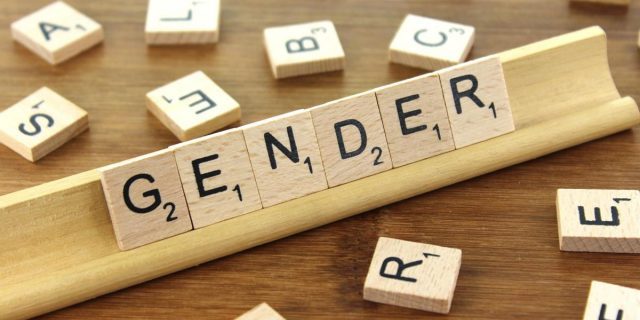
Nick, one of our teen patients, is taking over the blog this week to talk about mental health, gender identity and more.
The Merriam-Webster definition of gender is “the behavioral, cultural, or psychological traits typically associated with one sex.”
Or at least, that’s the fifth definition for it. Three of the other four, including the very first, describe grammatical gender, which I am very familiar with having Spanish as my first language. The fourth definition is only a single word: “sex.” If I’m going to be honest, none of these definitions fully encompass the true weight of what that word ‘gender’ means for me. Sure, I’ve had to deal with gender in my home language plenty of times—but is that actually what gender is? Only a construct in a language in order to ensure people know what you’re talking about?
For me, that answer is a definite no. Gender isn’t just a way to describe things in my home language. Gender isn’t just what’s down below the belt. Gender isn’t only a behavioral, or cultural, or psychological thing. My gender has been how I’ve experienced life.
From a young age, I was baffled by the usage of ‘él’ and ‘ella’ in sentences, constantly asking my grandparents to just use my name instead of the feminine ‘ella’ pronoun. It felt off somehow. At that point, I wasn’t asking to be called by another one, I was only slightly uncomfortable with the smoother ‘y’ sound rather than that harsh bite of ‘l.’ ‘Él’ was the sound of a young man, a boy. I was only a little girl who didn’t fully comprehend what differentiated me from the boy I had a crush on.
I wore dresses comfortably back then. I would squeal in joy whenever my grandmother sewed me a new gown, and show off the flowy fabrics in front of my father with a smile on my face. Now, I still wear dresses, but mostly in the privacy of my room. I don’t show off my dresses for my dad anymore. I wear them for fun, but there’s something there now that wasn’t there before, telling me how wrong it is for a boy to wear a dress and enjoy it. Blame it on my upbringing—blame it on the machismo. There’s a kind of guilt there now. I shouldn’t be wearing a dress anymore.
The last few days of eighth grade were an uncomfortable mess for me. I was one of the first kids to ever raise a fuss at my school for LGBT+ rights, and there were rumors being spread around the school about how I must be “a gay,” too. I tried putting my chosen name on my diploma and in my yearbook entry—that got me sent to the vice principal’s office for a stern talking to. At that point, I was still only just figuring out what I wanted to identify as, what I wanted to say when people asked what my gender was. If I’m going to dig into my memory, I think that I was saying I was genderfluid at the time, with most days landing on gender-neutral and male.
Back when I identified as genderfluid, I tended to switch around my names as I felt my gender flicking around the spectrum: on the days I was feminine, it was my birth name; the days I was neutral, it was Nicky; and the days that I felt masculine, it was what is now my chosen name. The name flipping was taken as a joke originally, but it eventually got around my homeroom that, yes, I was genderqueer, and yes, I was being serious about the pronoun thing, and, no, I wasn’t going to stop being queer just because the administration told me to.
At the same time that I was unofficially coming out to my entire year and dealing with the principal of the school, I fell in love with one of the girls in my class. It was an awkward thing for most of my friends to understand. Sure, they could understand that I felt like I was a boy, but liking a girl? That meant that I was gay, right?
No, I had to explain multiple times to them. I am a boy. Liking boys would mean I was gay. Didn’t liking girls mean that I was straight?
My gender didn’t impact my sexuality all that much in the end. I was still pansexual and me being a boy didn’t change things—I would have fallen in love with that girl no matter what.
I eventually got rejected by her. She wasn’t ready for a relationship “with another girl.”
To me, my gender is the lens that now colors my memories of the past. My gender is part of how I think and speak about systemic issues. My gender is my culture and my history intersecting and colliding in a bloody mess. I am a male. I am a boy. Yo estoy un niño.
Nick E.* is sixteen years old and writes about sexuality, gender, and mental health, among other topics. He also enjoys reading and writing his own short fiction stories.
*Not the author’s real name.
The Mount Sinai Adolescent Health Center is located in New York City. It provides comprehensive, confidential, judgment free health care at no charge to over 10,000 young people every year. This column is not intended to provide medical advice, professional diagnosis, opinion, treatment or services to you or to any other individual, only general information for education purposes only.


